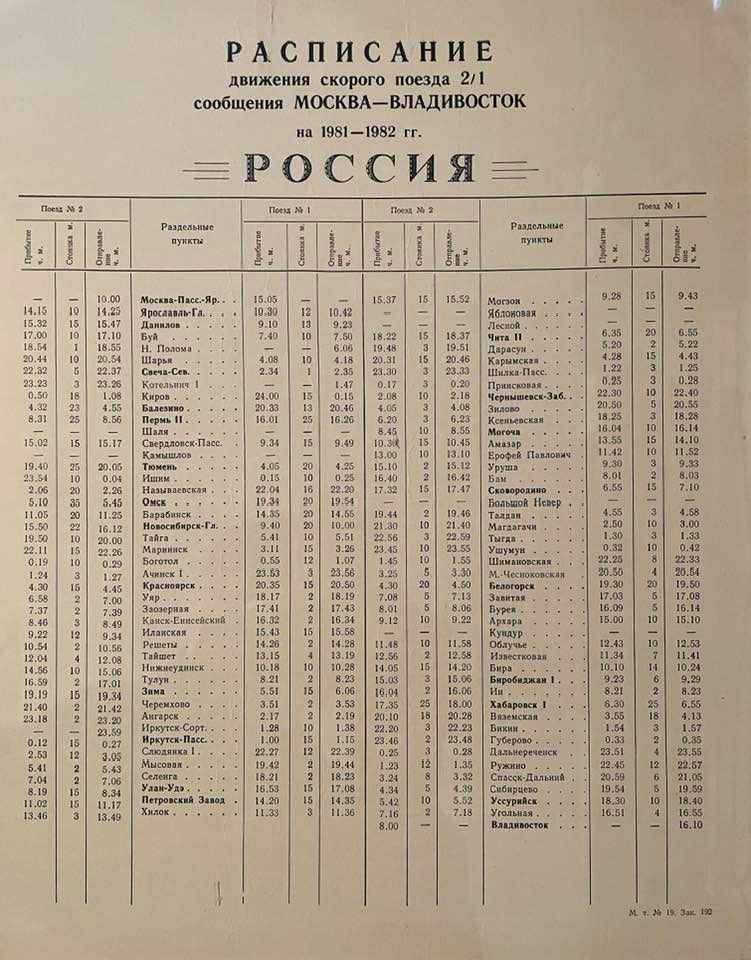MAY 4, 2022 – I took no photographs from the train or of any of the stations—it was strictly forbidden—but shot a roll of film on my side-trip to Lake Baikal and the village of Listvanka. In my letter home, I recorded visual impressions along the route.
“Between Moscow and Khabarovsk there were about seven hours of ‘world class’ scenery,” I wrote, “and this was confined to the area around Lake Baikal. On my eastbound trip, the train arrived at Lake Baikal right at sunrise, and I was treated to some masterpiece creations of nature. [. . .] On one side a huge red sun emerged from the deep blue waters of Baikal. On the other side rose a majestic and very wild mountain range blanketed with fresh, deep snow. The morning light painted the mountains pink [. . .] For an hour or so the train ran just 10 meters from the shores of Baikal. From my vantage point I could see deep down into the water.
“On the return trip [. . .] we arrived at the seven-hour wonder section at about 2.00 h. local time, when a full moon sailed over the lake and across the mountains. What had been pink on the trip east was now shimmering silver.
“The scenery along the rest of the railway,” the letter continued, “was not particularly spectacular but neither was it uninteresting. Granted, there were long sections of flat, unremarkable landscape, but much of the trip was through gently undulating countryside, covered with birch and spruce forests and broken occasionally by a winding river or bubbling stream. Several times we plowed through raging blizzards, and from the comfort of our warm carriage, we could admire the Siberian winter fairyland of snow-covered firs. If I were a poet I should write a collection about the cold, quiet beauty of that country.
“Aside from the major cities,” I reported, “many small villages dot the countryside along the Trans-Siberian Railroad. Most—I can say, all—are strikingly primitive, consisting of small, single-family cottages. These dwellings are made of logs, and they usually sport decorative trim and shutters painted blue or green. Streets are often unpaved and usually frightfully muddy. Horse-drawn carts are commonplace. House gardens are prolific, though I imagine the growing season is rather short. On occasion I saw villagers gathered at a communal water well. Each person had a bucket or two, and some of the women even had yokes of the sort we associate with the Chinese peasant From these observations and from the presence of ‘outhouse’-size structures, I concluded that many villages in Asian Russia lack modern plumbing.”
“The small stations at which we stopped,” I wrote, “were treasure islands of colorful characters: short, plump peasant women wrapped in heavy coats and scarves, who carried big bundles and sold boiled potatoes, cooked cabbage, and pastries; soldiers dressed in great coats; Siberian men wearing great fur caps and knee-high, muddy, black boots, who strained under the weight of oversized, home-fashioned backpacks. In many villages I noticed Asians, and in Irkutsk and Ulan-Ude, I saw many Mongols, who were quite handsome and beautiful.” (Cont.)
(Remember to subscribe to this blog and receive notifications of new posts by email.)
© 2022 by Eric Nilsson
